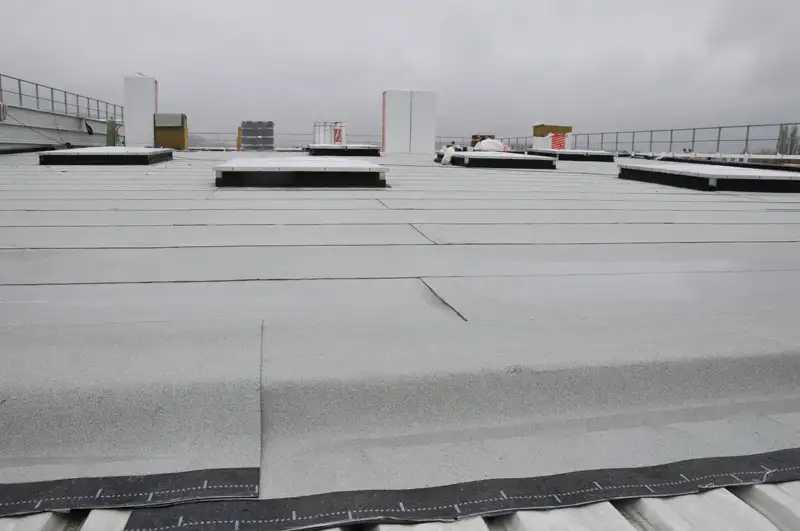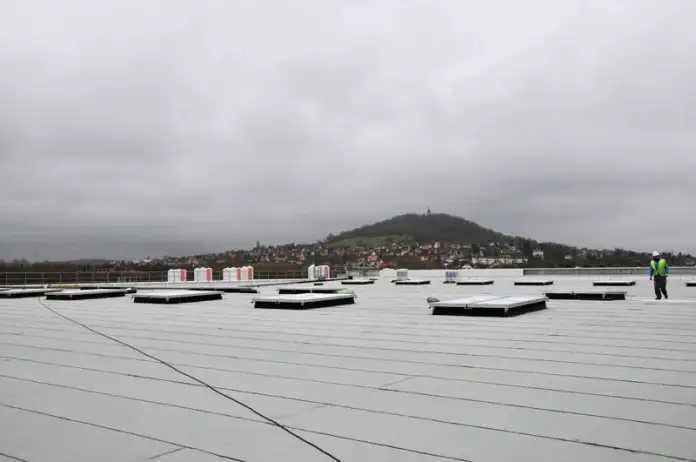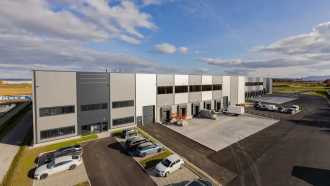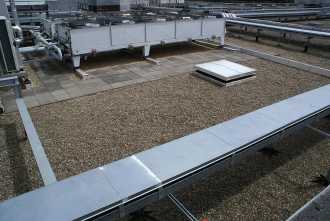Our country pages
Africa
Europe
Search
Ecological waterproofing for PSA Peugeot Citroën

Depolluting nitrogen oxides with a waterproofing membrane
The challenge
For this new plant located in Vesoul (in Haute-Saône, France), spanning 5000 m², the Buildings, Infrastructures & Environment Engineering Department (Ingénierie Bâtiment Infrastructure Environnement - IBIE) at PSA Peugeot Citroën was keen on implementing a global environmental policy at all levels of construction.
The roof of this building, which is intended for receiving regulated products (meaning products that may present risks in the event of fire) had to be partially fireproof. The insulation of the roof therefore required the implementation of a customized sealing solution which would meet this technical constraint as well as the environmental ambitions of the group.
Jump to section
The solution
To meet the project owner's ecological requirements, we opted for our NOx-Activ depolluting membrane. Thanks to surface granules covered with titanium dioxide, the product has the ability to transform nitrogen oxides into salts by means of photocatalysis. The salts are then drained by washing them out with rainwater. NOx-Activ therefore directly destroys nitrogen oxides (NOx), one of the causes of air pollution in urban areas. As a result, the roof of this plant can destroy the NOx generated by 4 diesel vehicles or 17 petrol cars during one year.
The mechanical implementation conforms with the technical constraints linked to the nature of the roof's fireproof insulation.
Creation of a waterproofing membrane with depolluting properties
The harmful effect of nitrogen oxide (NOx) emissions is well-known. However, the lesser-known photocatalytic efficiency of a membrane creates an opportunity to design and create environmentally sustainable industrial roofing projects.
The waterproofing membrane applies the principle of photocatalysis, a natural process through which a photocatalysing substance is "activated" thanks to ultraviolet rays, which release electrons, which in turn are highly efficient oxidising agents. The result is an acceleration of the normal oxidation-reduction reactions of polluting organic substances, including nitrogen oxide (NOx), which are turned into innocuous compounds that are more easily degradable.
A great deal of work has gone into increasing the effects of this innovation using also titanium dioxide (TiO2), which is the main photocatalysing element. The inclusion of this element confers self-cleaning and depolluting properties on the material compounds used to cover the building. The roof, therefore, becomes an "active" element in the protection of the environment and health and in the improvement of air quality.
The characteristics of the NOx-Activ® range of products make them suitable for use on residential, industrial, airport, hospital and school buildings, in addition to playing a key role in sustainable environmental projects. Indeed, the manufacture and transport of said products requires no increase in energy consumption, they are not classified as hazardous, and they do not need special treatments at the end of their life cycle.
PSA Peugeot Citroën
Project Highlights
Project Highlights
Contracting authority: PSA Peugeot Citroën France
Architectural firm: Service IBIE (PSA)
Supervisory office: Socotec (IBIE for waterproofing)
Waterproofing company: Hardy
Surface area: 5,000 m²
Date: end of 2010
Products: Parafor Solo GFM Nox active




